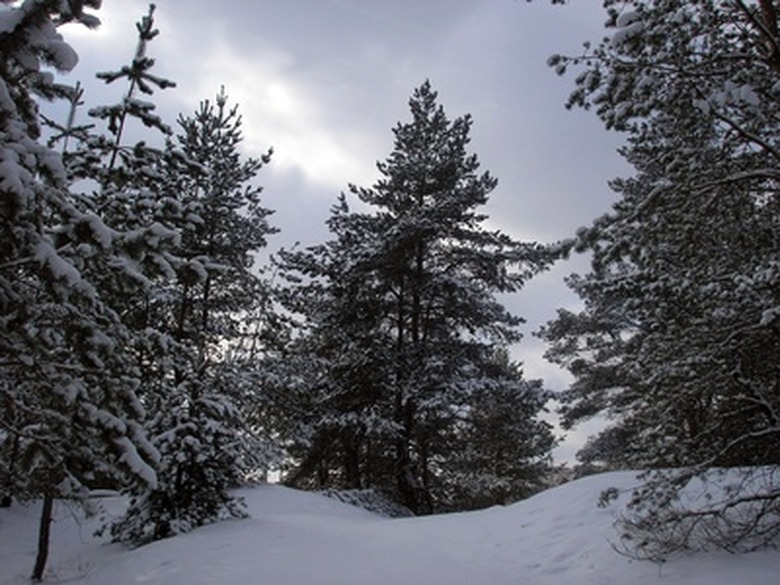Pine Trees That Grow Contorted & Twisted
Many people conjure images of perfectly triangular evergreens when they think of pine trees. While many evergreen pine trees have trunks that grow in a straight line, there are a few distinct types of pine that grow in contorted and twisted shapes. Their unconventionally shaped trunks lend the trees a unique, almost whimsical silhouette, making them easily recognizable by gardeners and nature enthusiasts alike.
Torrey Pine
According to the Torrey Pines State Natural Reserve in California, Torrey pines are the rarest pine trees in North America. It is found exclusively in the natural reserve area and on Santa Rosa Island. Known scientifically as Pinus torreyana, the Torrey pine prefers sandy soils and high elevations. This slow growing pine has a 100 year life span and has a thin, brittle bark that harbors no commercial interest. Due to their location, the 40 foot tall trees have an extensive root system that grows upwards of 300 feet at maturity. Their trunks grow in a twisted, gnarled pattern due to the high, salt water winds that constantly batter their habitat. These trees are occasionally grown for ornamental purposes in their native California.
- Many people conjure images of perfectly triangular evergreens when they think of pine trees.
- Their trunks grow in a twisted, gnarled pattern due to the high, salt water winds that constantly batter their habitat.
Bristlecone Pines
Bristlecone pines, specifically the Great Basin bristlecone pines or Pinus longaeva, stand a modest 60 feet high. Occupying six western states within the United States, bristlecone pines are rare but highly acclaimed. The oldest living thing on the planet is reputed to be a bristlecone pine–over 4,700 years old–in the White Mountains of California, nicknamed "Methuselah." The average age of these battered and gnarled trees, collectively among known specimens, is 1,000 years old. The wood of the tree is bright orange and scaly. It is incredibly dense and resistant to pests and diseases. The wood itself is gnarled, and the periodic vascular growth and death habits of bristlecone pines lend them a unique, spiraling silhouette.
- Bristlecone pines, specifically the Great Basin bristlecone pines or Pinus longaeva, stand a modest 60 feet high.
- The wood itself is gnarled, and the periodic vascular growth and death habits of bristlecone pines lend them a unique, spiraling silhouette.
Table Mountain Pine
Table mountain pines are native to the Appalachian mountain region of the United States. Known scientifically as Pinus pungens, it is also called by the common name of hickory pine, mountain pine and prickly pine. Standing a mere 20 to 35 feet tall, the table mountain pine grows as an independent tree or in a small stand along rocky ridge tops with high elevations. The branches of table mountain pines are frequently longer than the height of the tree, according to the Western North Carolina Nature Center. High winds, poor soils and a unique growing habitat lend table mountain pine a twisted, sparse shape with a flat top.
References
- The Torrey Pine State Natural Reserve: Torrey Pine
- "National Wildlife Federation Field Guide to Trees of North America"; Bruce Kershner, Craig Tufts, Daniel Mathews, Gil Nelson; 2008
- "The Bristlecone Book: A Natural History of the World's Oldest Trees"; Ronald M. Lanner; 2007
- The Ancient Bristlecone Pine
- Western North Carolina Nature Center: Table Mountain Pine
